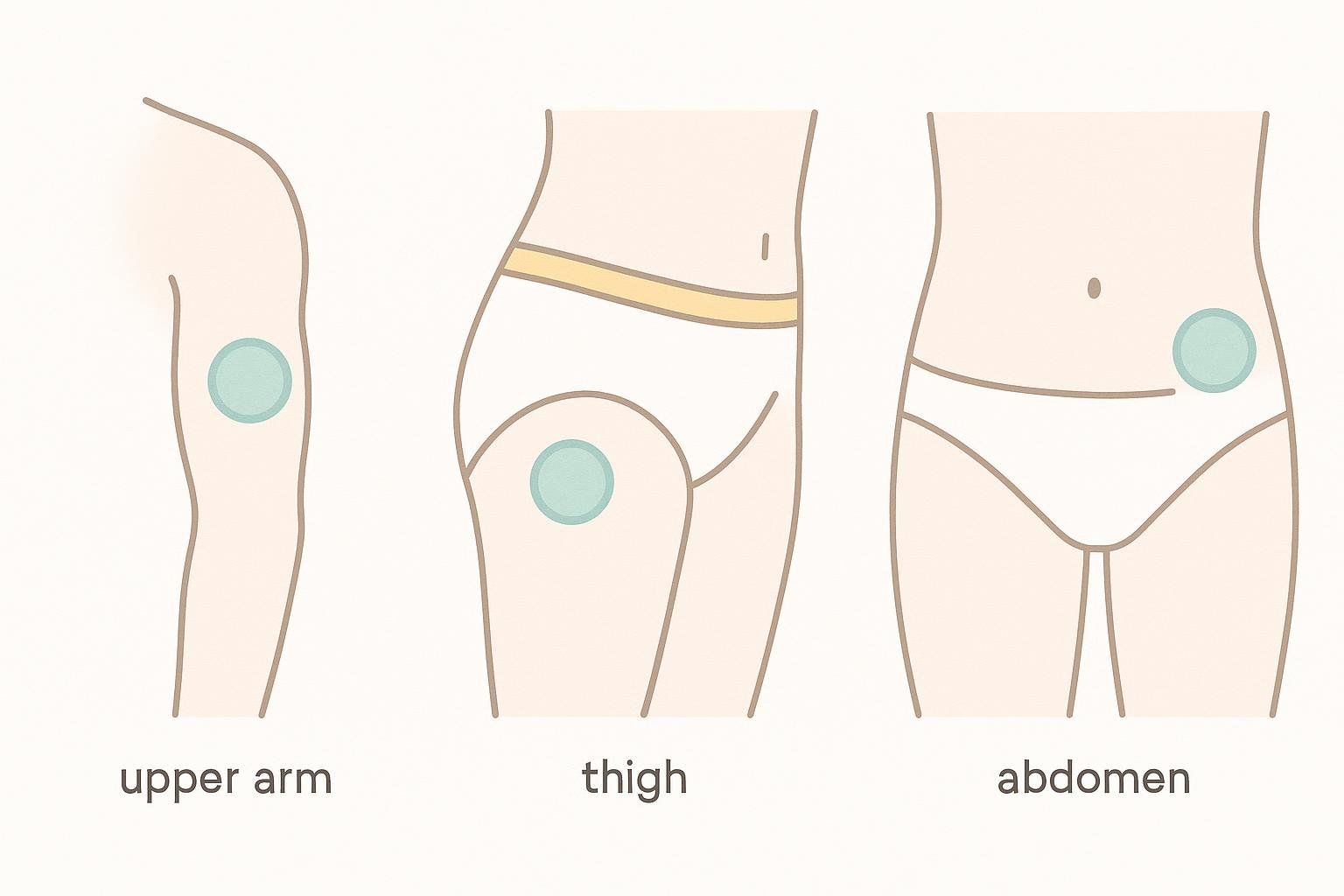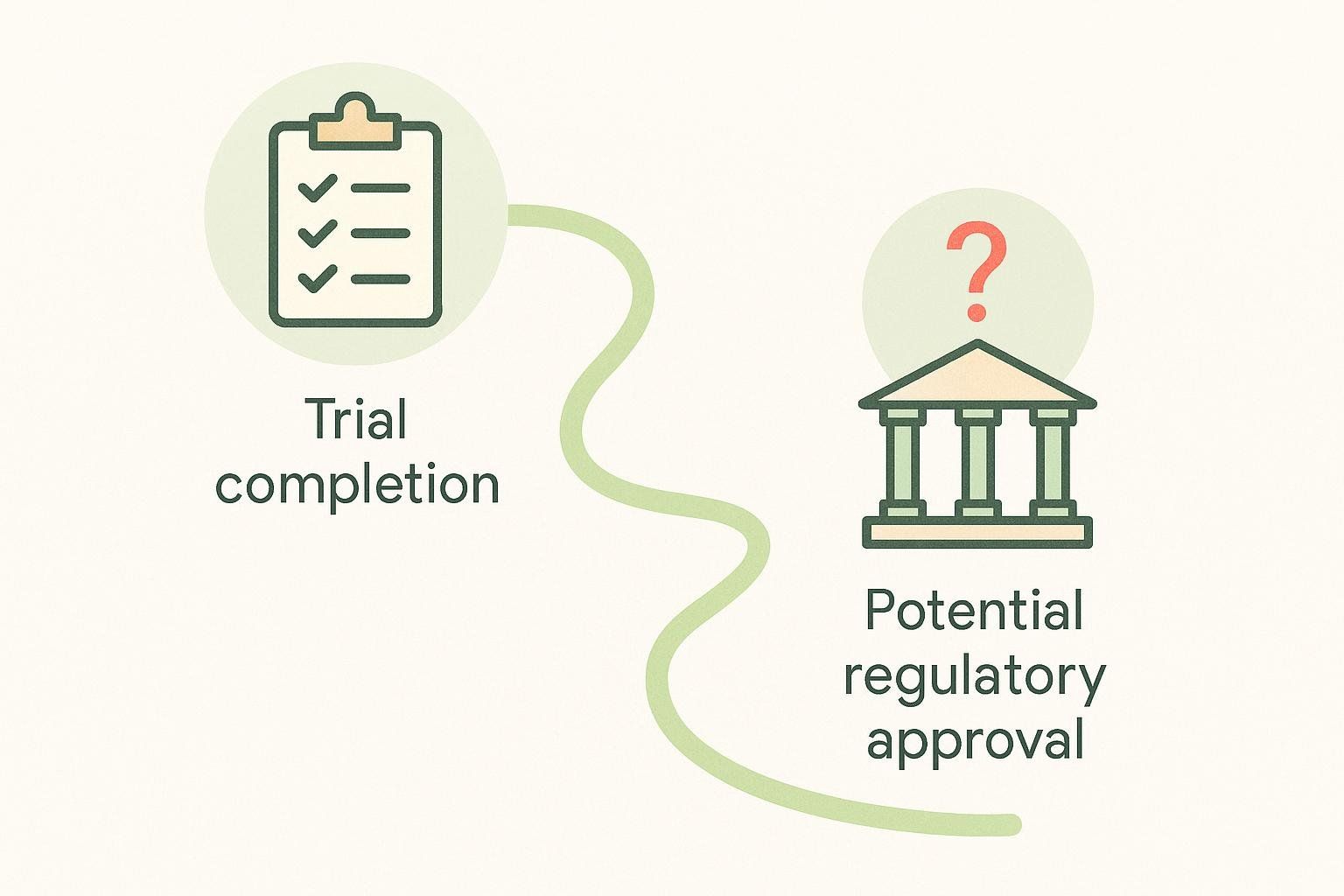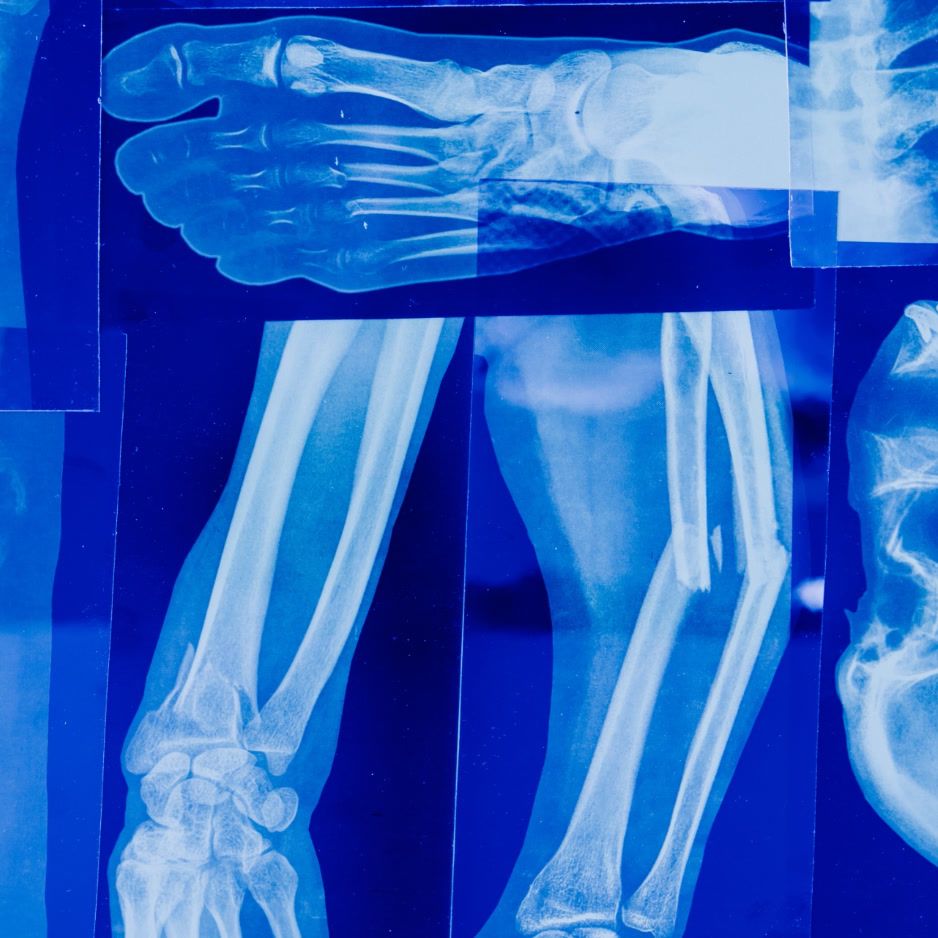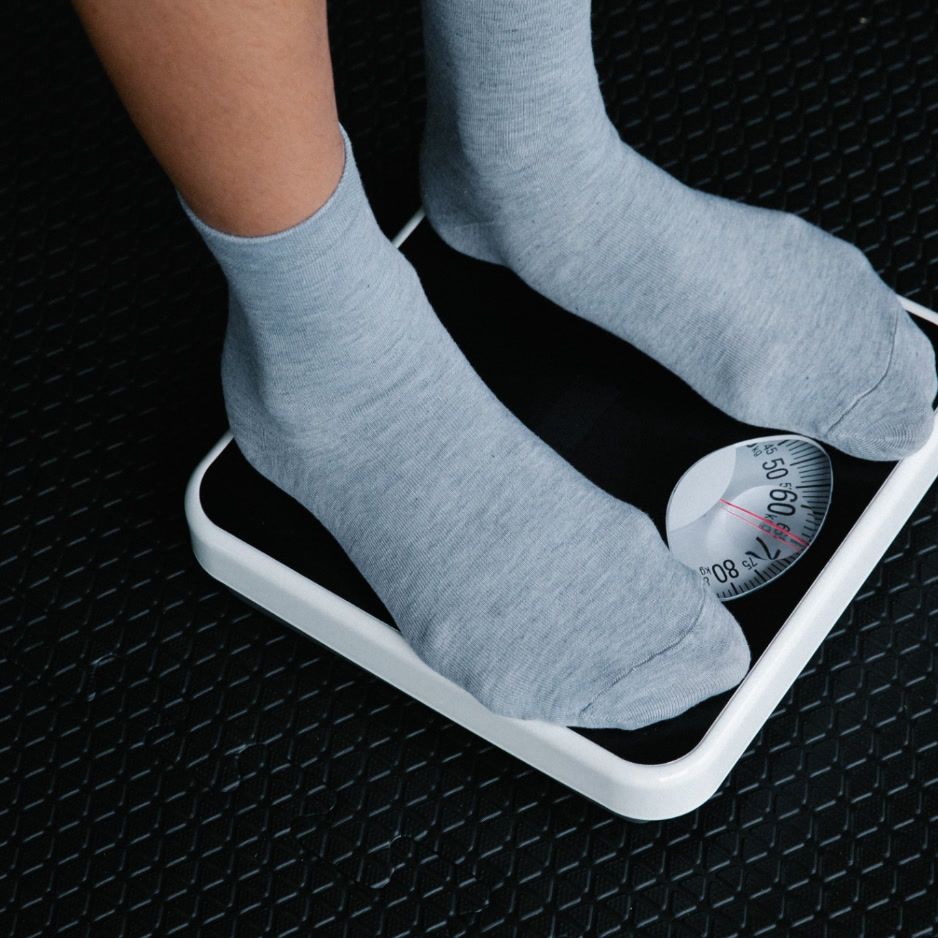Retatrutide Dosage Guide & Titration Schedule 2025

Retatrutide Dosage Guide & Titration Schedule 2025
Updated October 2025
Retatrutide is emerging as one of the most powerful weight-loss medications in development. This once-weekly injectable targets three hormone receptors simultaneously (GLP-1, GIP, and glucagon), and Phase 2 data showed up to 24% average body-weight reduction in 48 weeks (NEJM, 2023).
But here's what matters most: dosing strategy determines your success. Starting too high or escalating too quickly can turn manageable nausea into a deal-breaker, while the right titration schedule keeps side effects mild and results dramatic.
This guide provides everything you need to have an informed conversation with your healthcare provider about retatrutide dosing.
What you'll find inside:
- How to safely start and progress through retatrutide treatment
- A step-by-step titration schedule from Phase 2 trials
- What to expect at each dose level
- Comparison with semaglutide and tirzepatide
- Side-effect management strategies
- Evidence-based FAQ
Disclaimer: Retatrutide remains investigational. Final dosing instructions will depend on Phase 3 outcomes and FDA labeling. Always follow your prescriber's advice.
What Is Retatrutide?
Retatrutide is a triple-action weight-loss medication that works differently than anything currently available. While semaglutide (Wegovy) targets one hormone receptor and tirzepatide (Mounjaro/Zepbound) targets two, retatrutide activates three receptors at once: GLP-1, GIP, and glucagon.
This unique mechanism helps reduce appetite, slow digestion, improve blood sugar control, and boost fat metabolism. The result? More dramatic weight loss than existing medications, with Phase 2 trials showing up to 24% body-weight reduction in under a year.
Why Dosing Strategy Matters
Like other incretin-based medications, retatrutide's main side effects are gastrointestinal: nausea, diarrhea, vomiting, and constipation. In the Phase 2 study, GI symptom rates nearly doubled when participants jumped straight to 8 mg instead of titrating gradually from 1 mg (NEJM, 2023).
The key principle is simple: start low, go slow. This approach keeps side effects manageable while preserving the dramatic weight-loss effect.

How to Start Retatrutide Treatment
What to Expect Before Your First Dose
Your healthcare provider will:
- Review your medical history and weight-loss goals
- Confirm you're a candidate (typically BMI ≥30, or BMI ≥27 with weight-related conditions)
- Discuss realistic expectations and timeline
- Schedule follow-up appointments every 4 weeks
Most providers begin with 1 mg once weekly for the first 2–4 weeks. This starting dose allows your body to adjust to the medication while minimizing side effects. Some clinics may start at 2 mg based on individual factors, but 1 mg remains the safest evidence-based entry point.
Your Personalized Titration Schedule
Every person's journey with retatrutide is unique. Your provider will adjust your dose based on:
- How well you tolerate the current dose
- Weight-loss progress
- Side-effect severity
- Individual health factors
The goal is to reach your optimal maintenance dose—typically 8–12 mg—at a pace that works for your body.
Book a BodySpec DEXA scan today and see exactly how your body composition changes over time.
Standard Retatrutide Titration Schedule
The table below synthesizes the protocols used by Eli Lilly (the manufacturer) and those recommended in expert commentaries (IAPAM, 2024; Nicerx, 2024).
| Phase | Weeks | Weekly Dose (mg) | What to Expect |
|---|---|---|---|
| Starting Dose | 1 – 4 | 1 – 2 mg | Your body adjusts to the medication; mild nausea is common but usually resolves quickly |
| Early Escalation | 5 – 8 | 4 mg | Weight loss becomes more noticeable; appetite suppression increases |
| Middle Escalation | 9 – 12 | 6 mg | Continued progress; side effects typically stabilize |
| Late Escalation | 13 – 16 | 8 mg | Approaching maintenance dose; significant weight loss visible |
| Maintenance | ≥ 17 | 8 – 12 mg | Target dose based on individual response and tolerability |
Important: If you experience significant nausea or other side effects, your provider may keep you at your current dose for an extra 2–4 weeks before increasing. This does not reduce long-term effectiveness—it simply allows your body more time to adjust.
What Results Can You Expect?
Weight Loss by Dose
| Weekly Dose | Mean Loss @ 24 wks | Mean Loss @ 48 wks | % Achieving ≥15% Loss |
|---|---|---|---|
| 1 mg | –7.2% | –8.7% | 13% |
| 4 mg | –13.1% | –17.3% | 60% |
| 8 mg | –15.9% | –22.8% | 77% |
| 12 mg | –17.5% | –24.2% | 83% |
Source: NEJM, 2023
What this means for you: At the highest studied dose (12 mg), more than 8 out of 10 participants lost at least 15% of their body weight. For someone starting at 200 pounds, that's 30+ pounds in under a year—while still gradually titrating the dose to minimize side effects.
Comparison with Other Weight-Loss Medications
| Drug | Receptor Targets | Typical Maintenance Dose | 1-Year Weight Loss | FDA Status |
|---|---|---|---|---|
| Retatrutide | GLP-1 + GIP + Glucagon | 8–12 mg weekly | 22–24% (Phase 2) | Investigational (Phase 3 ends 2026) |
| Tirzepatide (Mounjaro/Zepbound) | GLP-1 + GIP | 10–15 mg weekly | ~21% | Approved 2023 |
| Semaglutide (Wegovy) | GLP-1 | 2.4 mg weekly | ~15% | Approved 2021 |
For a deeper dive into semaglutide protocols, read Mastering Ozempic Dosing.
Your Maintenance Dose: What Comes Next?
Once you reach your target dose (typically 8–12 mg), you'll continue at this level to maintain your results. Most people stay on their maintenance dose for:
- Ongoing weight management
- Appetite control
- Metabolic health benefits
Your provider will schedule regular check-ins (typically every 8–12 weeks) to:
- Monitor weight-loss progress
- Assess side effects
- Adjust dose if needed
- Track body composition changes with DEXA scans
Can you stop retatrutide after reaching your goal weight? Many people continue long-term to maintain their results. Discuss discontinuation timing with your provider, as gradual tapering may help prevent weight regain.
Mastering Your Injection Technique
Self-administering retatrutide is straightforward once you learn the technique. Here's how to make it comfortable and effective:
Step-by-Step Guide
-
Choose your injection site
- Abdomen (most common): 2+ inches from belly button
- Thigh: front or outer side
- Upper arm: back of arm (may need assistance)
-
Rotate injection sites
- Use a different spot each week to minimize irritation
- Keep a log if helpful to track rotation
-
Prepare your injection
- Wash hands thoroughly
- Allow medication to reach room temperature (remove from fridge 30 minutes before)
- Check that liquid is clear and colorless
-
Inject safely
- Pinch skin gently to create a fold
- Insert needle at 90-degree angle
- Press injection button and hold for 5–10 seconds
- Remove needle and dispose in sharps container
-
Pick a consistent day and time
- Retatrutide's ~6-day half-life supports once-weekly dosing (NEJM, 2023)
- Many people choose Sunday mornings for convenience
- Set a weekly phone reminder
Pro tip: Use an ultra-fine needle (32–34 gauge) for maximum comfort. Your pharmacy can help you select the right supplies.

Staying Comfortable: Managing Side Effects
Most side effects are mild and improve as your body adjusts. Here's how to minimize discomfort:

Common Side Effects & Solutions
| Symptom | Practical Tips | When to Call Your Doctor |
|---|---|---|
| Nausea | • Eat smaller, low-fat meals • Stay upright 1–2 hours after dosing • Sip ginger tea or peppermint • Ask about anti-nausea prescriptions | Severe nausea lasting >48 hours or preventing fluid intake |
| Diarrhea | • Hydrate with electrolyte drinks • Reduce high-fiber foods temporarily • Consider OTC anti-diarrheal (ask provider first) | Diarrhea lasting >3 days or signs of dehydration |
| Constipation | • Add soluble fiber (psyllium) • Increase water intake • Take short daily walks • Discuss stool softeners with provider | No bowel movement for >4 days with discomfort |
| Heart rate increase | • Monitor resting heart rate • Stay hydrated • Avoid excessive caffeine | Sustained increase >20 bpm from baseline or palpitations |
When to seek immediate medical attention:
- Severe abdominal pain (potential pancreatitis)
- Vision changes or severe headache
- Signs of allergic reaction (rash, difficulty breathing, swelling)
- Persistent vomiting preventing medication or fluid intake

Tracking Progress: Why Body Composition Matters
The scale can't tell the full story. A 2023 tirzepatide study reported that lean tissue made up roughly 25–40% of the weight lost (PubMed). Because retatrutide works through similar mechanisms, monitoring what you're losing (fat vs. muscle) is critical.
The DEXA Advantage
A BodySpec DEXA scan provides precise measurements of:
- Body fat percentage
- Visceral fat (the dangerous fat around organs)
- Lean mass
- Bone density
Recommended scanning schedule:
- Baseline: Before starting retatrutide
- Follow-up: Every 12 weeks during treatment
- Maintenance: Every 6 months after reaching goal
This data allows you to:
- Adjust protein intake to preserve muscle
- Optimize resistance training programs
- Celebrate fat loss even when the scale stalls
- Make evidence-based decisions about dose adjustments
Ready to get your baseline BodySpec scan? Use our location finder and get an accurate measurement of your body in minutes.
Safety Alert: Counterfeit Products
The FDA has flagged fake retatrutide vials being sold online (GoodRx, 2024). These counterfeit products may contain:
- Incorrect doses
- Contaminated ingredients
- No active ingredient at all
Authentic retatrutide is available only through clinical trials. Phase 3 completion is expected in early 2026, with possible FDA approval in 2027.
Protect yourself:
- Never purchase retatrutide from online retailers
- Avoid "research peptide" sellers
- Only obtain medication through licensed healthcare providers
- Report suspicious sellers to the FDA
Frequently Asked Questions
What is the starting dose of retatrutide?
Most clinical trials begin at 1 mg once weekly for 2–4 weeks before increasing to 2 mg. Some clinics may start at 2 mg based on individual factors, but 1 mg remains the safest evidence-based entry point.
How fast can I escalate to 8 mg?
Phase 2 protocols increased doses every four weeks (1 → 2 → 4 → 6 → 8 mg). This is the recommended pace for most people. Your provider may adjust this timeline based on your tolerance and response.
Can I stay at my current dose longer if I feel nauseous?
Yes, absolutely. Staying an extra 2–4 weeks at your current dose is common and does not blunt long-term weight loss. In fact, this approach often improves overall adherence by making the medication more tolerable.
What is the maintenance dose of retatrutide?
Most people maintain on 8–12 mg weekly once they've completed the titration schedule. Your optimal maintenance dose depends on your weight-loss goals, side-effect tolerance, and individual response.
How long do I stay on the maintenance dose?
Many people continue retatrutide long-term for sustained weight management. Discuss your specific timeline with your provider. Some may consider gradual tapering after reaching and maintaining goal weight for several months.
Is retatrutide approved yet?

No. Retatrutide is in Phase 3 trials. FDA approval could arrive in 2027 at the earliest.
How does retatrutide compare to tirzepatide?
Indirect data suggest slightly greater weight loss with retatrutide (24% vs. 21% at ~1 year). Retatrutide also adds glucagon receptor activity, which may enhance fat metabolism. Direct head-to-head trials have not yet been published.
Can I drink alcohol while taking retatrutide?
Discuss alcohol consumption with your provider. Alcohol may worsen side effects like nausea and could potentially increase low blood sugar risk. Moderate intake (1–2 drinks occasionally) is typically acceptable, but individual tolerance varies.
What if I miss a dose?
Take your missed dose as soon as you remember if it's within 4 days of your scheduled injection. If it's been more than 4 days, skip the missed dose and resume your regular weekly schedule. Never double doses.
Will insurance cover retatrutide?
Once approved, insurance coverage will vary by plan. During the investigational phase, retatrutide is only available through clinical trials at no cost to participants.
Key Takeaways
- Start at 1 mg and escalate every 4 weeks to reach your optimal dose of 8–12 mg
- Highest-dose studies show up to 24% body-weight reduction in 48 weeks
- Titration pace matters more than speed—staying longer at a dose doesn't reduce effectiveness
- Track body composition with DEXA scans to protect muscle mass while losing fat
- Work with your provider to personalize your dosing schedule based on tolerance and results
- Combine medication with resistance training and adequate protein for best outcomes
- Avoid gray-market products—authentic retatrutide is only available through clinical trials
Take the Next Step
Ready to track your progress with precision? Book a BodySpec DEXA scan today and see exactly how your body composition changes over time.
Understanding your baseline and monitoring changes every 12 weeks helps you and your provider make data-driven decisions about dosing, nutrition, and training—ensuring you lose fat, not muscle.


